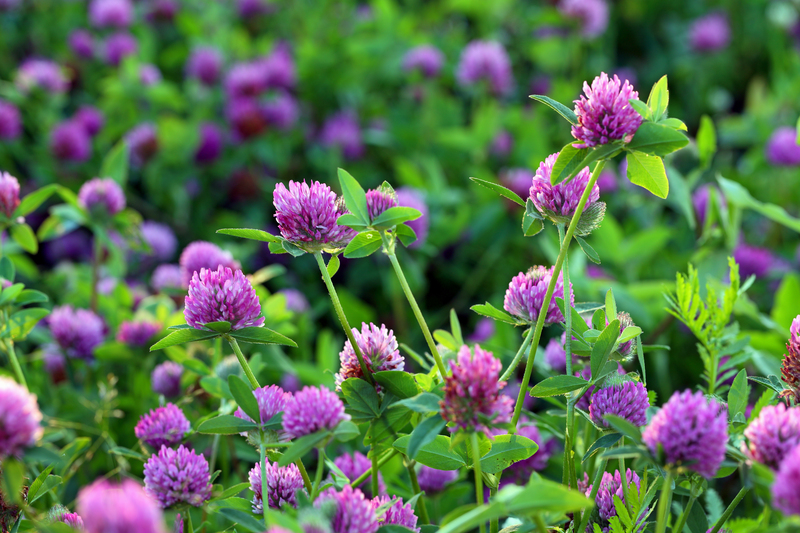Expert Techniques for Orchid Care
Posted on 05/09/2025
Expert Techniques for Orchid Care: Unlocking the Secrets to Vibrant Orchid Growth
Orchids, with their intoxicating beauty and enchanting allure, have captivated plant lovers for centuries. However, their reputation for being finicky has scared off many aspiring enthusiasts. If you've dreamed of nurturing exquisite orchid blooms in your home, you're in the right place! This comprehensive guide to expert orchid care will walk you through every essential technique, ensuring your orchids not only survive but thrive.
Understanding Orchids: Unveiling Their Mystique
Before delving into advanced orchid care, it's vital to grasp what makes these flowers so unique. Orchids, belonging to the family Orchidaceae, boast more than 25,000 species. Their exotic appearance and diverse colors are a result of evolutionary adaptation across various climates. Each species may have its own quirks, but shared characteristics allow for common care principles that'll boost every plant in your collection.
- Phalaenopsis (Moth Orchids): Among the easiest for beginners, with long-lasting flowers and forgiving nature.
- Cattleya: Known for their glamorous, fragrant blooms--these require a bit more attention to lighting and humidity.
- Dendrobium: Their sturdy growth makes them a top choice for intermediate growers.
- Vanda: Thrives in brighter, high-humidity settings--ideal for collectors seeking a challenge.

The Orchid Environment: Mimicking Nature for Lush Growth
Orchids often hail from tropical rainforests, growing as epiphytes anchored to trees, not in soil. Creating an optimal environment mimics their natural home and is a cornerstone of expert orchid cultivation.
Light Requirements: The Right Balance
Proper orchid lighting is crucial for vigorous growth and abundant blooms. Too little light leads to limp leaves and few flowers, while direct sun can scorch the foliage.
- Indirect Sunlight: Place orchids near east or south-facing windows with sheer curtains.
- Leaf Color: Healthy orchid leaves should be light-to-medium green; deep green indicates insufficient light.
- Supplemental Grow Lights: In low-lit settings, full-spectrum LED grow lights can maintain year-round blooms.
Temperature & Humidity: Creating the Perfect Microclimate
Orchids thrive with consistent temperatures and humidity:
- Ideal Temperature: Most orchids flourish in daytime temps between 65-80?F (18-27?C) and night temps of 55-65?F (13-18?C).
- Humidity Range: Aim for 40-70% relative humidity; use humidifiers, pebble trays, or frequent misting if indoor air is dry.
- Ventilation: Orchids require airflow to avoid fungal diseases--use small fans on low settings if needed.
Expert Watering Techniques for Orchids
Watering is often the make-or-break skill for successful orchid care. Overwatering is the main culprit behind root rot, while underwatering can leave flowers stunted and leaves shriveled.
- Soak and Drain: Water thoroughly until it runs out the pot's bottom. Never let roots sit in standing water.
- Frequency: Most homes require watering every 5-12 days depending on humidity, species, and potting medium.
- Test the Medium: Poke your finger or a wooden skewer into the mix--if it's dry 1-2 inches deep, it's time to water.
- Type of Water: Use tepid, filtered water or rainwater; softened or fluoridated water can harm roots.
Signs of Watering Issues
- Wrinkled Leaves: Underwatering causes limp, wrinkled foliage.
- Yellow or Mushy Roots: A sign of chronic overwatering and root rot.
- Black Spots: Indicates fungal infection from poor drainage or excessive moisture.
Advanced Orchid Feeding and Fertilizing Strategies
Orchids in the wild absorb nutrients from rainwater and decomposing organic matter on trees. Houseplants need additional feeding for robust, regular blooms.
- Balanced Fertilizer: Use a weak (quarter-strength) balanced orchid fertilizer (20-20-20 or similar) every other watering during the growing season.
- Bloom Boosters: Before and during flowering, switch to a fertilizer higher in phosphorus.
- Flushing the Medium: Every month, water thoroughly without fertilizer to prevent salt buildup.
Expert Orchid Nutrition Tips
- Less is More: Overfeeding leads to leaf burn and poor growth. It's better to underfeed than overfeed.
- Organic Boosts: Incorporate natural supplements like worm tea or seaweed extract for micronutrients.
The Art of Repotting: Keeping Orchids Healthy and Happy
Repotting is critical to maintaining healthy orchid roots and ensuring continual growth. Most orchids need repotting every 1-3 years, depending on the medium and species.
- Best Time to Repot: After blooming or when new roots start to appear.
- Potting Media: Use chunky mixes like bark, sphagnum moss, or a specialized orchid blend to allow airflow to roots.
- Pot Choice: Transparent pots help you monitor root health and moisture. Always ensure proper drainage holes.
Expert Repotting Steps
- Remove Orchid: Gently ease from the old pot, shaking off loose medium.
- Prune Roots: Trim away any soft, black, or mushy roots using sterilized scissors.
- Position Carefully: Place the orchid in the new pot, arranging roots evenly. Fill with fresh medium, avoiding air pockets.
- Water Sparingly: After repotting, wait a few days before regular watering--the roots need to heal.
Pest and Disease Management: Proactive Orchid Health
No orchid care guide is complete without a section on pest and disease prevention. While orchids are relatively hardy, they are vulnerable to several common issues:
- Mealybugs: Soft, white, fuzzy pests hiding in leaf joints.
- Scale Insects: Look like brown bumps on leaves and stems.
- Spider Mites: Leave delicate webs and stippled leaf surfaces.
- Fungal Rot: Caused by overwatering and poor ventilation.
Expert Remediation and Prevention Tips
- Manual Removal: Wipe leaves with a damp cloth or cotton swab soaked in rubbing alcohol.
- Preventive Measures: Regularly inspect all plant surfaces, isolate infested plants, and maintain good air circulation.
- Nontoxic Sprays: Use insecticidal soap or neem oil for persistent issues.
- Sanitize Equipment: Always sterilize cutting tools before pruning or repotting to avoid spreading pathogens.
Orchid Blooming: Encouraging Spectacular Flowers
The ultimate goal in orchid care is seeing your plants produce glorious, long-lasting flowers. If your orchid is reluctant to bloom, expert techniques can work wonders:
- Temperature Drop: Many orchids (e.g., Phalaenopsis) require a nighttime temperature drop of 10-15?F to prompt spike formation.
- Light Adjustment: As daylight hours decrease, gradually increase light exposure to signal the change of seasons.
- Feeding Schedule: Use "bloom booster" fertilizer as spikes develop for vibrant colors and prolonged blooming.
- Pruning Spent Spikes: After blooming, cut above a node to potentially encourage secondary blooms.
Orchid Care Throughout the Seasons: A Year-Round Approach
Orchids adapt their growth cycles based on the season--your care should shift accordingly for optimal health.
Spring & Summer Orchid Care
- Growth Period: Increase watering and fertilizing, as most orchids put out new leaves, roots, and shoots.
- Watch for Pests: Warmth and moisture attract insects--monitor closely.
- Repotting: Ideal time for refreshing the potting medium.
Fall & Winter Orchid Care
- Reduced Watering: Many orchids enter a rest period--less water and no feeding unless actively growing.
- Protect from Cold Drafts: Keep orchids away from chilly windows or doors.
- Increase Humidity: Heated homes get very dry--mist or use trays to compensate.
Advanced Expert Techniques for Orchid Enthusiasts
Ready to take your orchid care to the next level? The following advanced techniques are beloved by orchid specialists and can make all the difference for rare or sensitive varieties:
- Water Culture: Growing orchids directly in water works for some species and can aid root recovery, but requires constant vigilance.
- Keiki Propagation: A "keiki" is a baby orchid clone. Encourage keikis with hormone paste and manage them until roots are several inches long before potting separately.
- High-Humidity Enclosures: For rare species, create terrariums or glass enclosures that maintain optimal moisture and warmth.
- Custom Fertilizer Regimens: Tailor nutrients for specific growth stages--experiment to find the perfect balance for your collection.
- Record Keeping: Track each orchid's habits, bloom times, and care--seeing patterns over the years improves success rates.

Common Myths About Orchid Care Debunked
Expert orchid growers know that care often involves unlearning popular misconceptions. Let's debunk a few:
- Myth: "Orchids are only for experts."
Fact: Many varieties, especially Phalaenopsis, thrive with basic care! - Myth: "Ice cube watering is easiest."
Fact: Ice can shock delicate roots; room temperature water is best. - Myth: "Orchids only bloom once."
Fact: With proper orchid care, many cultivars rebloom year after year. - Myth: "Orchids must always be in flower."
Fact: Rest periods without flowers are normal and necessary for health.
Summary: Your Path to Orchid Mastery
Mastering advanced orchid care is a journey that rewards patience, experimentation, and observation. By understanding your orchid's unique needs for light, water, feeding, and environment, you'll unlock spectacular blooms and robust foliage. Remember:
- Observe your orchids daily and react to subtle changes.
- Adjust your techniques seasonally and by species.
- Embrace the learning process--even experienced growers lose a flower or two.
With dedication and the expert tips outlined above, your orchids will thank you with a brilliant symphony of blooms, year after year.
Meta Description: Discover expert techniques for orchid care with this detailed guide: learn advanced tips for watering, lighting, feeding, repotting, pest management, and blooming to achieve stunning, long-lasting flowers.

